Nikon D5300
—
- photography
- 0
- finished
Nikon D5300 is a mid-range digital single-lens reflex (DSLR) camera which has recently replaced my old Nikon D60. The 2014 model isn’t cutting edge, but it is a huge improvement over my 15 or 20 years old camera and buying now may be last time before the prices of electronics become unreachable due to the ongoing war in Ukraine and soaring inflation.

Nikon D5300, front view
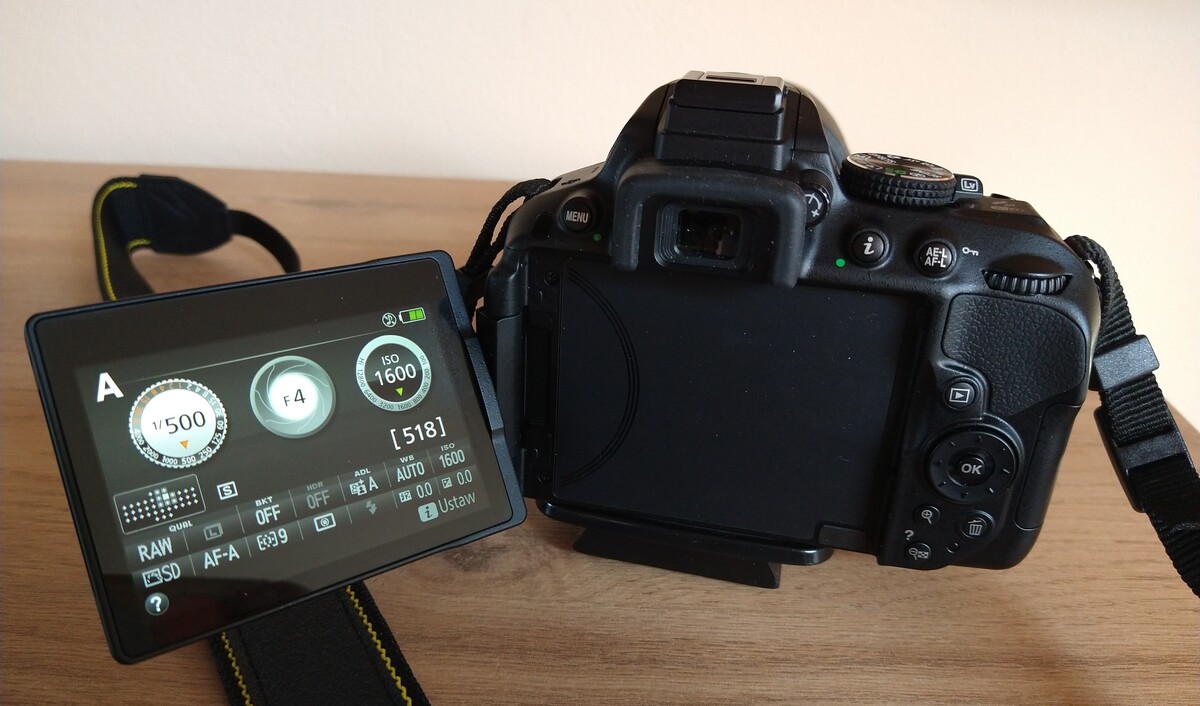
Nikon D5300, back view
The choice
Why Nikon? There are 2 reasons. First, I am rather satisfied with the brand and see no major drawbacks of it. Second, I already own Nikon F-mount lenses, so vendor lock-in.
There are few Nikon cameras which I considered as viable D60 replacements: basically the whole segment of used or new D7xxx and D5xxx DSLRs. Not mirrorless though, because they are prohibitively expensive and I wouldn’t be able to use my F-mount lenses with Z-mount cameras without an adapter1.
Long story short, I chose D5300 because it has the features which I need and nothing else at the price I’m comfortable paying. For example, I can live without environmental sealing of D7xxx line or its built-in autofocus (AF) motor. On the other hand, tilted screen is important for me for the reasons which I’m describing later.
So, what are these features and what’s their impleentation? How does the camera feel and do I consider it a good choice? Read on.
ISO Range and Good Quality Low Light Photos
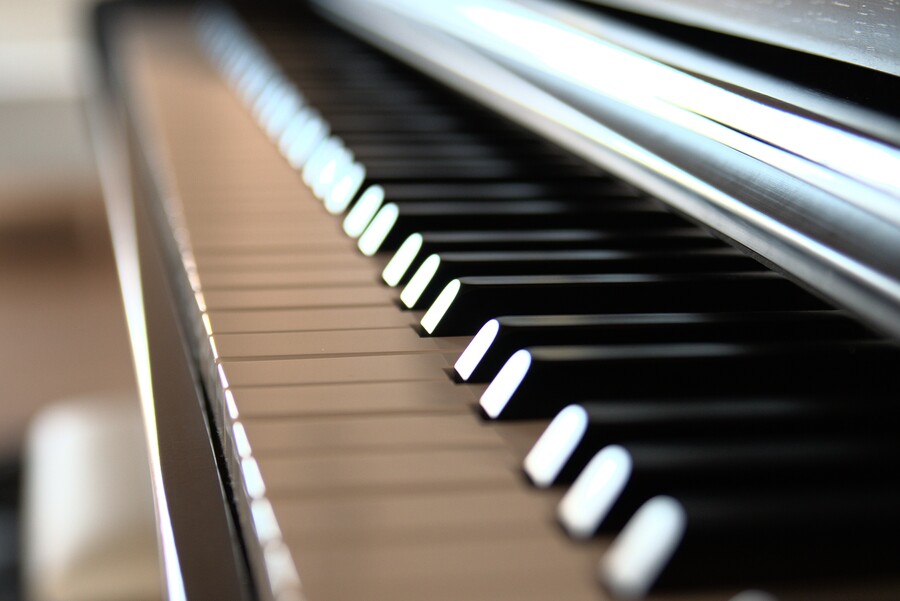
Photo of piano, 1/60, f/3.2, 52 mm, 800 ISO

Photo of piano, 1/50, f/4, 28 mm, 1600 ISO
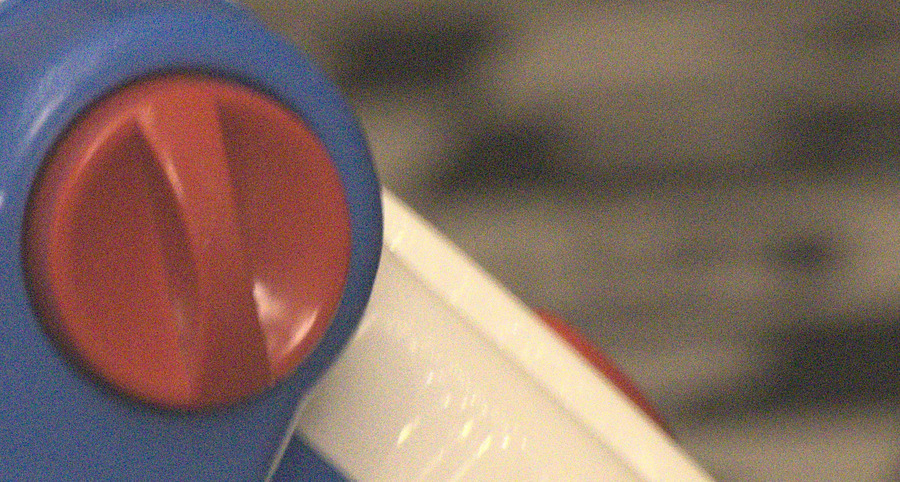
Noisy crop of the image, ISO 6400
Having the wider selection of ISO speeds and less noisy pictures is something I really, really needed. Lighting conditions are never perfect and often we must to compensate them by choosing more sensitive ISO speeds. In this regard, D5300 is clearly superb to D60.
Not only it can reach ISO levels unavailable in D60 (12800 vs 1600), but there are more steps between the “major” ISO speeds. In D60 the only available ISOs were 100, 200, 400, 800 and 1600. I kinda like this progression as a programmer, but having ISO160 or ISO250 is even nicer.
I could take beautiful, noiseless pictures with D60, but they had to be taken on sunny days in near-perfect conditions. The camera had always struggled inside the buildings or in the late evenings. I hope that D5300 will fix these flaws.
Modern image sensor in D5300 makes high-ISO photos less noisy than their lower speeds equivalents in D60. I believe that pictures taken with ISO6400 on D5300 are only slightly noisier than ISO1600 on D60. It’s a huge improvement.
Tilted Screen
I like taking shots from unconventional angles: either very low or very high. Mostly low, as I have 2 small kids. Without a rotary screen such shots are inaccurate: badly composed or out of focus. Not anymore. They are called live view shots and I can take them from any angle I want. The best: when taking ground-level photos, I no longer have to lie on the ground and get dirty.
The screen can be rotated in 180 degrees, which simplifies aiming self-portraits. To close the screen and disable it entirely, you face it towards the camera. For me this is the most natural, least distracting way of taking the photos, which allows me to concentrate on the environment and my subject rather than peek at each taken photo.
When screen isn’t closed, it shines all the time, even when you near your face to the camera. It is very unconfortable. The screen turns off only when you press the shutter trigger. I think that because of the tilted screen Nikon got rid of a proximity sensor which disabled the screen in my D60.
When you shoot pictures with the live view, the camera effectively acts as a mirrorless. The mirror is lifted and the light goes through the lens directly to the image sensor. What bothers me is that when you shoot the actual photo, there is a considerable lag between pressing the button and releasing the shutter. I’m not sure what’s going on inside the camera, but from the noises it makes it seems that it fiddles with the mirror back and forth. I can’t confirm it because the viewfinder remains pitch black all the time. The lag adds only to the first photo, so it’s possible to shoot the series or use bracketing.
Autofocus is considerably slower in live view and it tends to re-focus even if it is already set.
The quality of LCD screen is higher than in D60. I already trust it more than its predecessor to judghe the photo quality.
More Focus Points
D5300 has 39 focus points. D60 only had 3. I’m accustomed to the lower number of them, so although I know the theory behind the big numbers of AF points, how they track the subject or how they work together in the areas, I’m not yet very proficient in using all the new possibilities and often fall back to the old, trusty procedure: point camera at a thing, half-press the shutter release button, move the camera to get wanted composition, take the picture. It is faster and easier this way.
I believe that a lot of AF points will become useful in more dynamic situations. Seeing how the red rectangles follow the moving objects is fun!
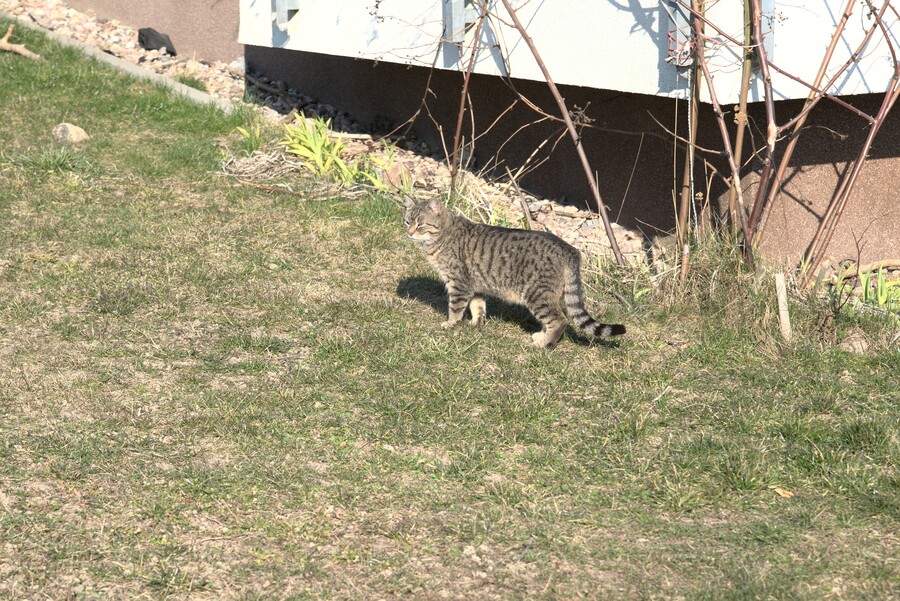
1/400, f/8, 75 mm, 200 ISO
Better Interoperability with Flashes
This was very important for me. I have a rather cheap Yongnuo external flash, which struggled with D60. It shot 1 out of 5 times and only had manual mode of operations available. Forget about rear sync or red-eye reduction. It made me hate taking photos with external flash.
With D5300 everything just works. Just like that, flash triggers 100% of times and TTL mode works. I can use rear sync and other goodies. Camera sees that there is a flash mounted on a hot shoe, speaks with it and doesn’t try to open the built-in flash any longer (it was slightly infuriating). Flash on the other hand correctly reports current aperture. It is great.
I feel, however, that photos made with this flash are a little overexposed and I have to manually compensate them. I haven’t tested it in really low-light conditions, so the error might be on me, not the equipment.
Videos
This isn’t huge, because all moder DSLRs can do it, but I wanted a camera which can also shoot nice videos. D5300 shoots 1080p/60FPS videos max, which is enough for me in terms of the image quality.
I am disappointed with the internal microphone, which perfectly records all of the camera noises and struggles with the voices of recorded objects and people. I’d try recording with external one, but all my mics are on USB and D5300 requires a mini-jack one, preferably with a hot shoe mount.
Tilted screen helps filming immensely and allows e.g. resting and stabilizing the camera on your belly. It’s probably the most unprofessional method of filming ever made, but I suck as a cameraman. :)
It’s worth noting that Nikon D5300 puts a 4 GB limit on videos file size, which is the limit of a single file on FAT32 file system. According to the manual it is roughly to 10-29 minutes of recording, depending on video settings. It’s silly limitation in 2022. The camera supports SDXC cards, which, according to SD 3.01 specification, mandates exFAT filesystem (with a max. file size of 128 PB)2.
But filesystems are only a part of the story – the official one from the manual. There’s the other side of the coin: EU taxes. Apparently EU put additional tax on video cameras, which, by EU’s definition, are devices that record at least 30 minutes of video3. Still image cameras are duty-free. This explains the limit of 29 minutes 59 seconds for some video formats.
Video cameras tax should be removed by now4, but Nikon didn’t release any firmware update which would remove this limitation. The last firmware was released in 2018, when video camera tax was still effective.
Overall, I am disappointed by video recording capabilities of D5300 and wouldn’t recommend it as a device primarily aimed at recording videos.
GPS
It’s a nice addition which I intend to keep turned off. I wouldn’t, but the camera’s manual says that once enabled, GPS continuously tracks position even when the camera is turned off, which puts me off. I don’t believe that Nikon calls home with my data, but I don’t like the feeling that camera’s draining the battery when I’m not actively using it.

1/200, f/8, 75 mm, 200 ISO
Shitty Wifi Mode
D5300 has a built in wifi. I didn’t research this topic before, but I initially thought that it would connect to the home network and allow some kind of UPnP discovery and usage.
It’s nothing of the sort.
Wifi mode works like this: camera creates a new network, unprotected by default. You connect your phone5 to this network and speak with the camera through a proprietary application.
I tried it for curiosity, but only had problems with it. The app couldn’t detect my camera and my phone kept disconnecting from Nikon’s network, because it was finding “better” networks (i.e. the ones connected to the internet). I didn’t have the patience to test it further, so I uninstalled the app and disabled wifi on the camera entirely.
I am now glad that I didn’t buy a slightly newer Nikon D5600, which apparently removed GPS and infrared receiver because these functions are available via the connected app. I don’t mind GPS (see above), but the lack of infrared receiver is a step back.
There are other third-party applications which promise to control the camera from the phone, but I didn’t try any of them.
Things I Didn’t Expect
There are things with which D5300 surprised me, mostly positively. I didn’t think about them when I was considering different camera models, because they are secondary to the main functions of the camera. Yet I believe that some of them deserve at least a mention.
Taking photos from the computer
When connected to the laptop with USB UC-E17 cable (which is included in the set), Darktable detects the camera and offers a mode in which it controls various settings such as aperture, shutter speed, bracketing, programs etc. Using this settings it can shoot a photo which is then immediately available on the computer. It can be used as intervalometer as well.
Effects
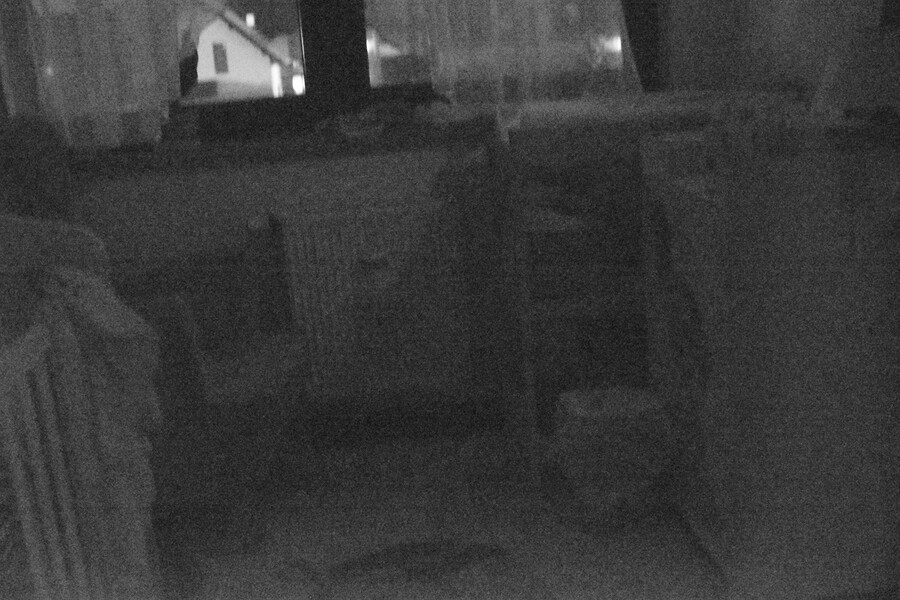
Test of noctovision special effect. According to the EXIF data, ISO of this image is 102400
I usually shoot in semi-automatic or manual modes, but D5300 offers a special “Effects” program in which photos are taken with some very specific effects and settings automatically applied. I don’t plan on using them extensively, but they are an interesting addition.
I especially liked the “noctovision”, which boosts the ISO speeds to insane value and shoots in black & white. Surprisingly, one can see at least some details in the photos, even if they are taken in very deep darkness.
Viewfinder HUD
Viewfinder HUD is configurable. You can enable the grid and add more information about current settings to the bottom panel (like the current ISO speed). It’s a good addition, but it still lacks from the user experience perspective.
Let’s take the grid. Nikon forces the one which has a big circle in the middle, but its purpos isn’t very clear for me6. I’d prefer an ordinary rule-of-thirds grid.
Regarding the bottom panel: D60 shows the exposure bar, which indicates whether current scene is appropriately illuminated. D5300 hides it in non-manual modes if the exposure is correct and only shows it when it becomes under- or overexposed. I find it extremely unintuitive and tend to forget about this “feature” and nervously search for the bar, fearing that I’m going to spoil the photo.
Separate Button for Release Modes
On the left of the body there is a separate button, which automatically opens a menu to choose a shutter release mode (single photo, series, self timer, remote release). I like it, because I don’t have to look it up in the menu. However, I’d like it better if consecutive presses of this button changed the mode instead of merely opening the choice window.
Conclusion
So far I like my new camera and I hope that it’ll serve me well in the upcoming years, similar to how his younger sibling had served me so far.